Art Terminology 101: 15 Art Terms to Impress Your Friends
Having enriching and insightful conversations about art is difficult if we don’t have the lingo down pat. As the biggest bunch of Australian art lovers, Bluethumb is here to change that! With the Adelaide Fringe starting this week, get geared up to discuss the city’s shows and exhibitions confidently with these 15 art terms.
1. Abstract
Perhaps one of the most popular art terms and even more popular categories on Bluethumb, abstract art strays away from the figurative (the literal way something looks.) As a process, abstraction combines feelings, concepts and spirituality with forms, colours and composition in search of expressing more than what we see; it shows that our reality is what we see with our brain, not with our eyes. Read more on abstract art by clicking here.
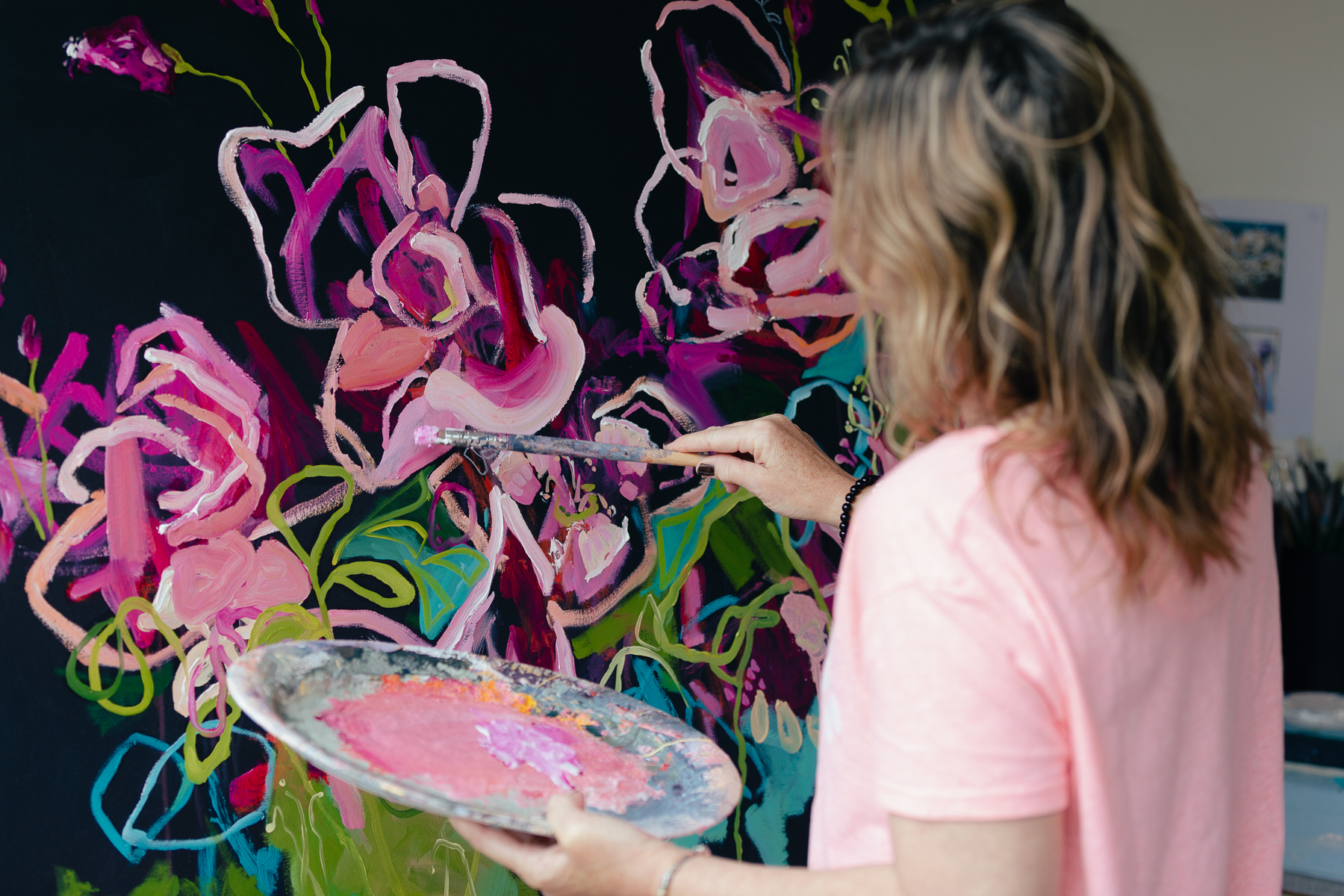
Bluethumb Artist Jen Shewring with her Abstract Artwork.
2. Composition
The arrangement of elements within the available space is known as the composition of a piece. For sculptures, this space is three-dimensional. How the elements are positioned has a direct effect with how we as a viewer interact with the piece.
3. Conceptual
When the idea – or concept – behind an artwork is more important than the way that it looks, this is conceptual art. The emergence of modern art has allowed conceptual art to reach a larger audience and find its place within the art world.
4. Form
Form can be taken in two different directions: it may refer to the work’s physical nature – the overall form taken by the work; or, within a work of art, it can refer to the element of shape among the various elements that make up a piece.
Form is one of the seven elements of art which are the visual tools that an artist uses to compose a work of art. All of them are important art terms to have in your repertoire! They also include line, shape, value, colour, texture, and space.
Form largely relates to three-dimensional appearance, and is considered either geometric (a sphere, cube etc) or organic (a leaf, a human face.) For centuries, form was the most important element in painting and was based above all on the human body.
5. Impasto
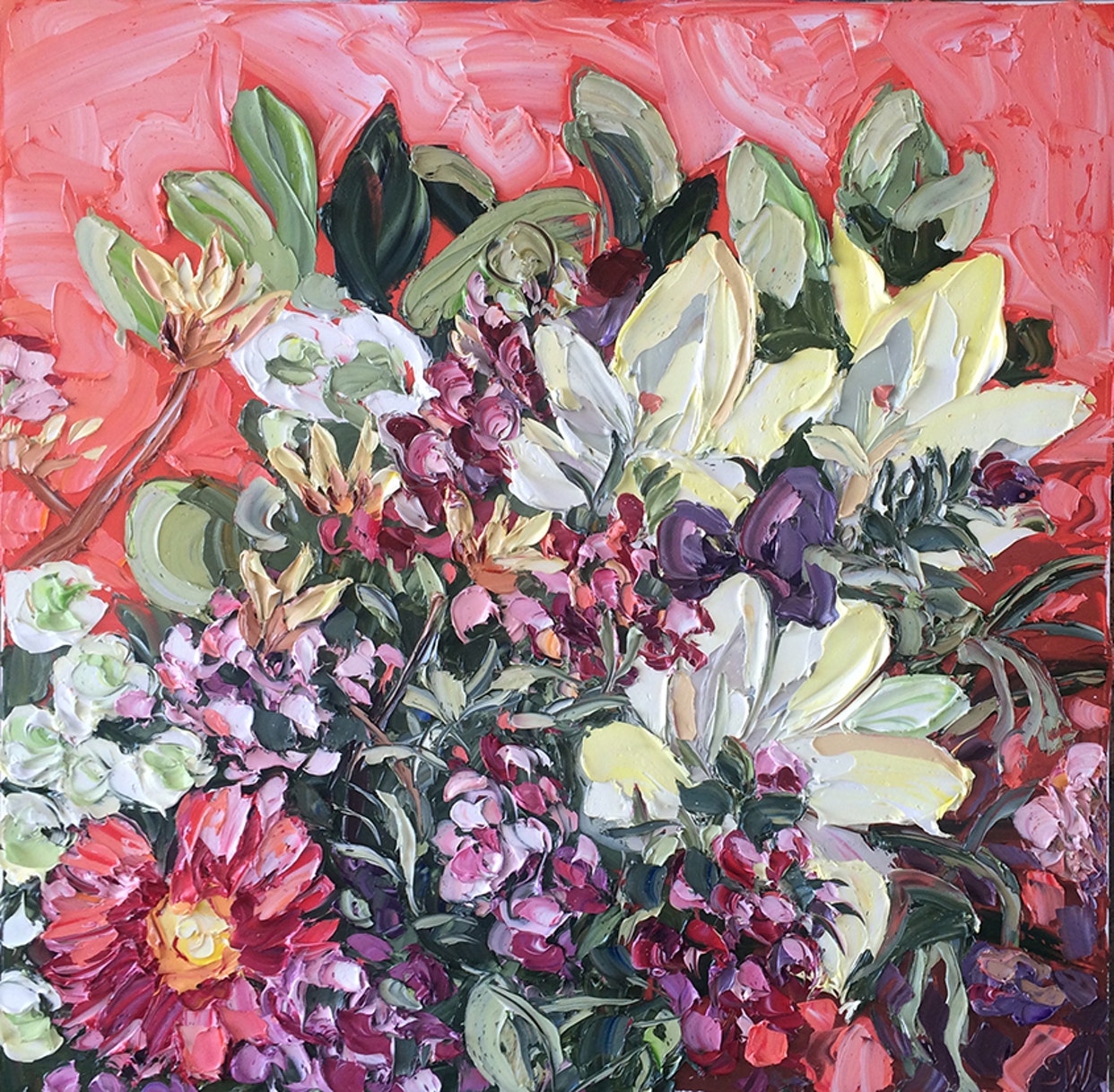
This glorious still life, A Bunch On Monday, pops from Sally West’s bright colour use and an impasto approach!
6. Impressionism
From its birthplace in France in the nineteenth century, impressionism is based on the practice of painting spontaneously ‘on the spot’ and often outdoors rather than in a studio from sketches. Main impressionist subjects were landscapes and scenes of everyday life. Today, Impressionism is largely characterised by a painting’s small yet visible brush strokes, its emphasis on accurate depiction of light in its changing qualities, and similarly the feeling of movement – as if we are experiencing the piece in fleeting time.
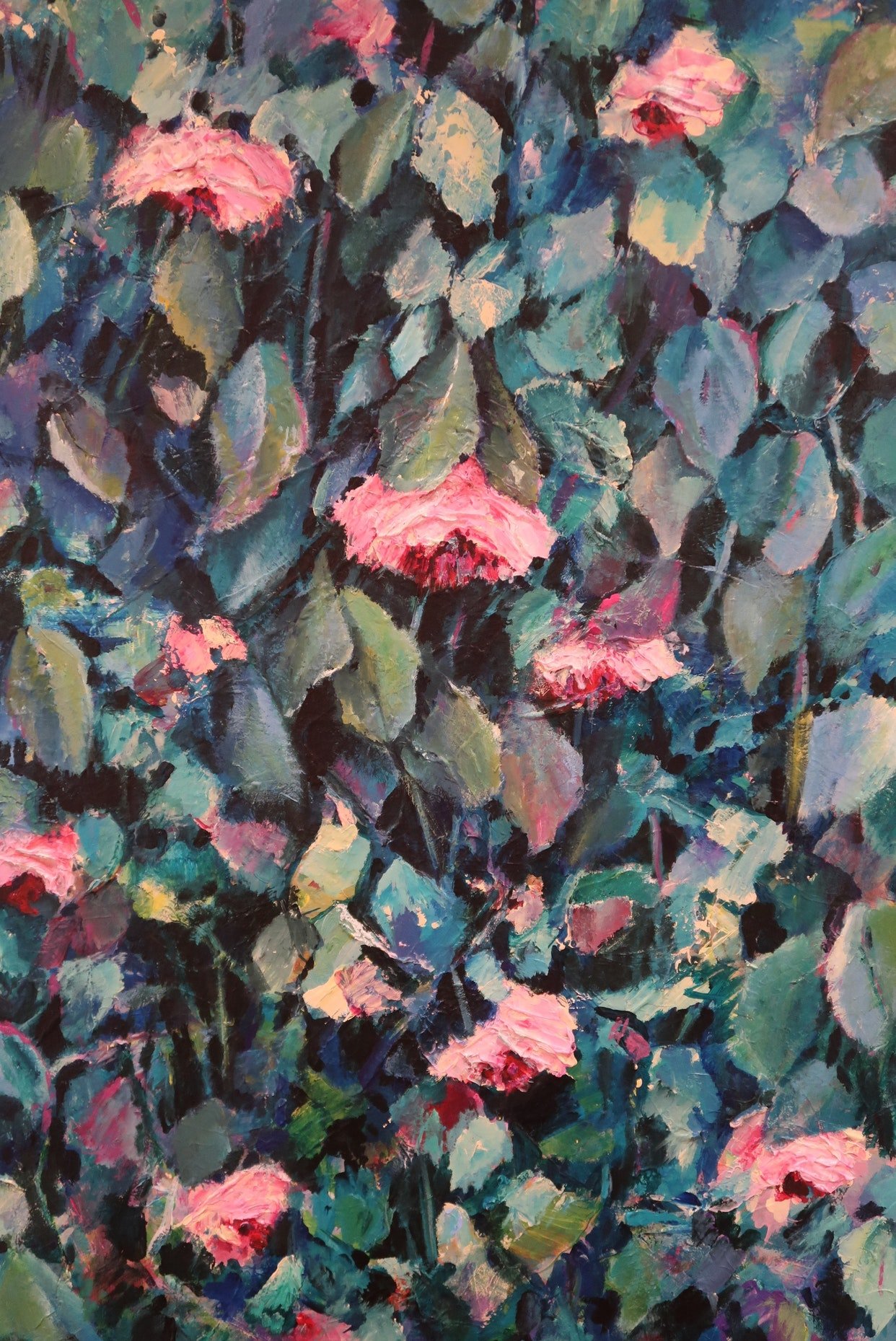
Heaven Scent by Maria Cross shows movement and fluctuations in texture to emphasise the feeling of time passing.
7. Medium
Medium can be used in broad and more specific contexts.
Firstly, medium describes a specific type of art. For instance, painting, printmaking and sculpture are all types of medium. Essentially, every category of artwork is its own medium. The plural of medium in this sense is media.
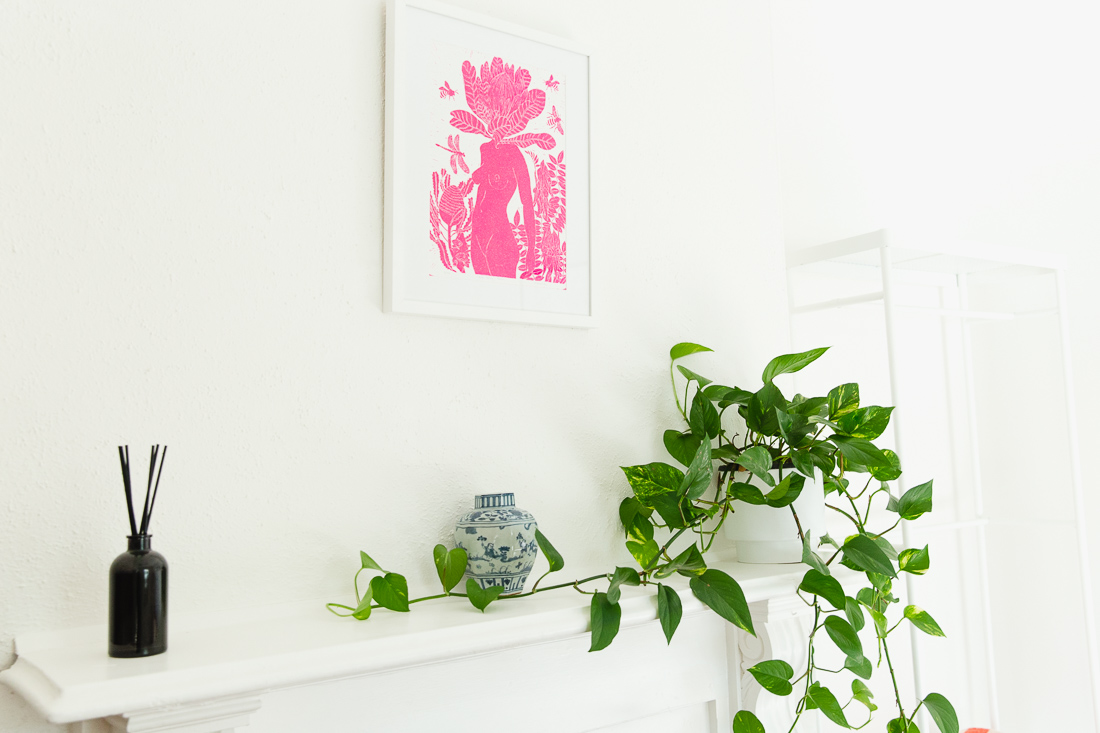
Bluethumb Co-founder George Hartley sports a super fun lino print by bestseller Marinka Parnham above his mantelpiece.
Besides this usage, medium can also describe a particular artistic material. On each artwork listing on Bluethumb, you’ll see a combination of a type of paint and support, such as “oil on canvas” or “gouache on paper”.
8. Memento Mori
A memento mori is an artwork designed to remind the viewer of their mortality and of the shortness and fragility of human life.
In the painting below, artist Julie Strawinski explores Memento Mori along with other allegories. She uses symbolism to communicate the transitional stages of life. “Each object having its own unique meaning, emphasises the emptiness and futility of worldly possessions,” Julie explains. She creates her own narrative, using her collection of Antiquities to illustrate the fragility and transience of life.

Vanitas: In Life Beloved by Julie Strawinski
The skull in the above painting is a widely understood symbol of Memento Mori and the transience of life. Additionally, we can consider the passing of time with the hourglass, the temporary nature of riches in diamonds and pearls, and bubbles represent an ephemeral moment in time. The scattered silk ribbons indicate a rare and exclusive setting – one filled with vanity.
9. Modern
During the early decades of the twentieth century, as much of the world began to shift experience and values in line with modern industrial life, there was a need for art to do the same. Using the late nineteenth century as a precedent for the movement, artists began to use new imagery, techniques and materials to create art that was a more accurate reflection of modern society’s reality, hopes and expectations.
10. Narrative
Narrative art is art that tells a story. Until the twentieth century, Western art had been predominantly narrative in its nature, telling stories from religion, myths, and history. At this time, it was generally understood that the audience was expected to already be familiar with the story on which the artwork was based.
In modern art movements, artists may use narrative qualities in the work, but these are more often coded so that information on the artist would be necessary to fully understand the piece.
11. Still Life
A still life is a work of art depicting mostly inanimate subject matter, typically commonplace objects which are either natural or man-made. Usually, these items are set on a table and often include organic objects like fruit and flowers and household items like glassware and textiles.
Last year’s Still Life Award winner in the Bluethumb Art Prize was Jane Reynolds. Through her still life arrangements, Jane undertakes an in-depth, often meditative study of her subjects. She is drawn to everyday objects and materials that may be glanced over in their usual setting. Jane’s usual subject matter includes discarded and unwanted items; by capturing collected subjects in a new space, she gives them new value and a stage to continue living on.
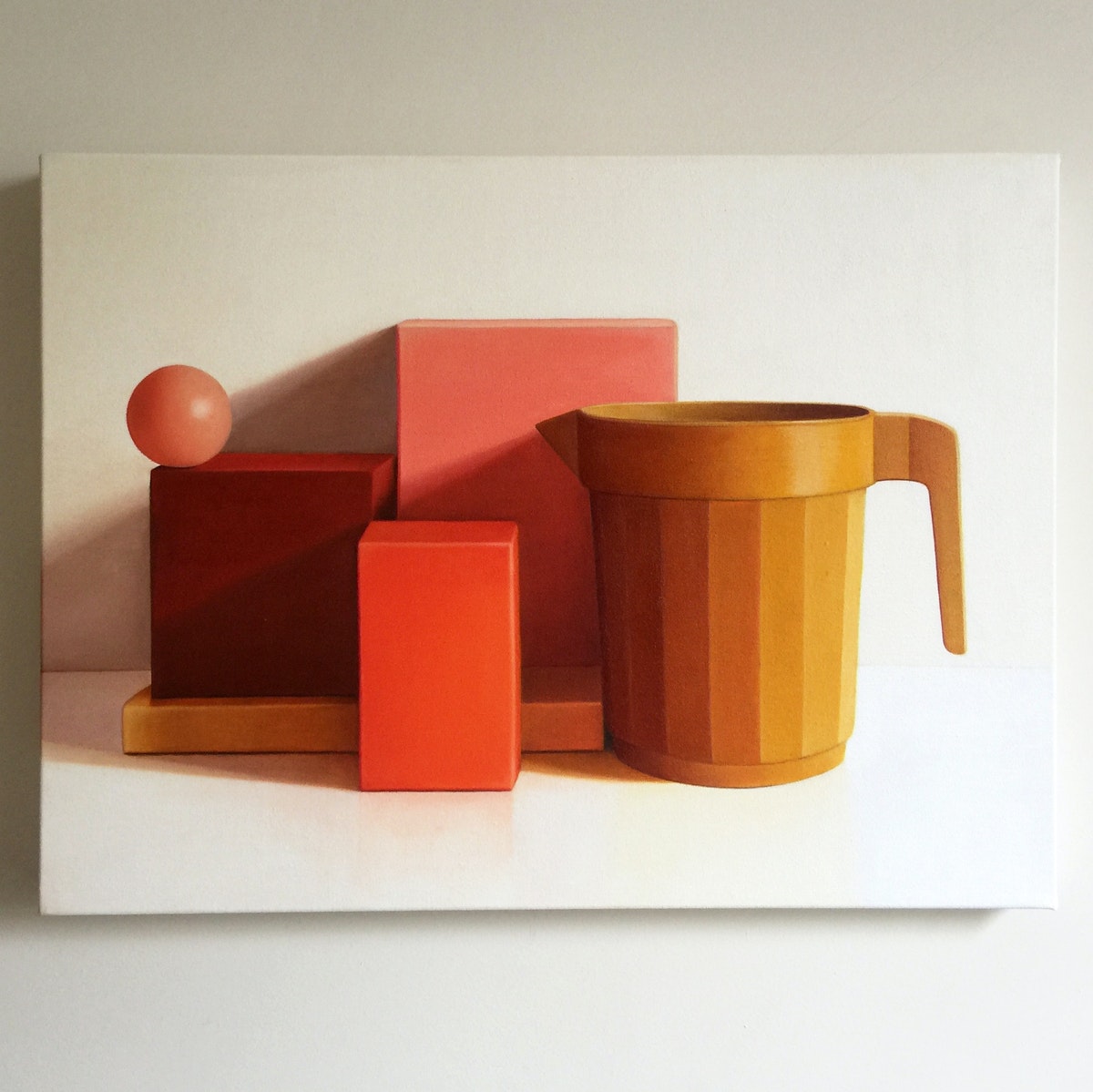
The piece that took home last year’s Still Life award in the Bluethumb Art Prize, Arrangement 24 by Jane Reynolds.
12. Surrealism
In rejection of a logical vision of life, Surrealism aims to challenge and revolutionise the human experience. It favours the value of the unconscious and dreams. The artists associated with this movement, such as Dalí, brought an essence of magic and strange within their work, and have continuously inspired more contemporary surrealists and artists.

Yulia Pustoshkina is a Surrealism veteran on Bluethumb – click here to read our previous interview with the artist.
13. Symbolism
The late nineteenth-century movement of symbolism prioritised the expression of an idea through realistic and figurative art over the literal description of the subject.
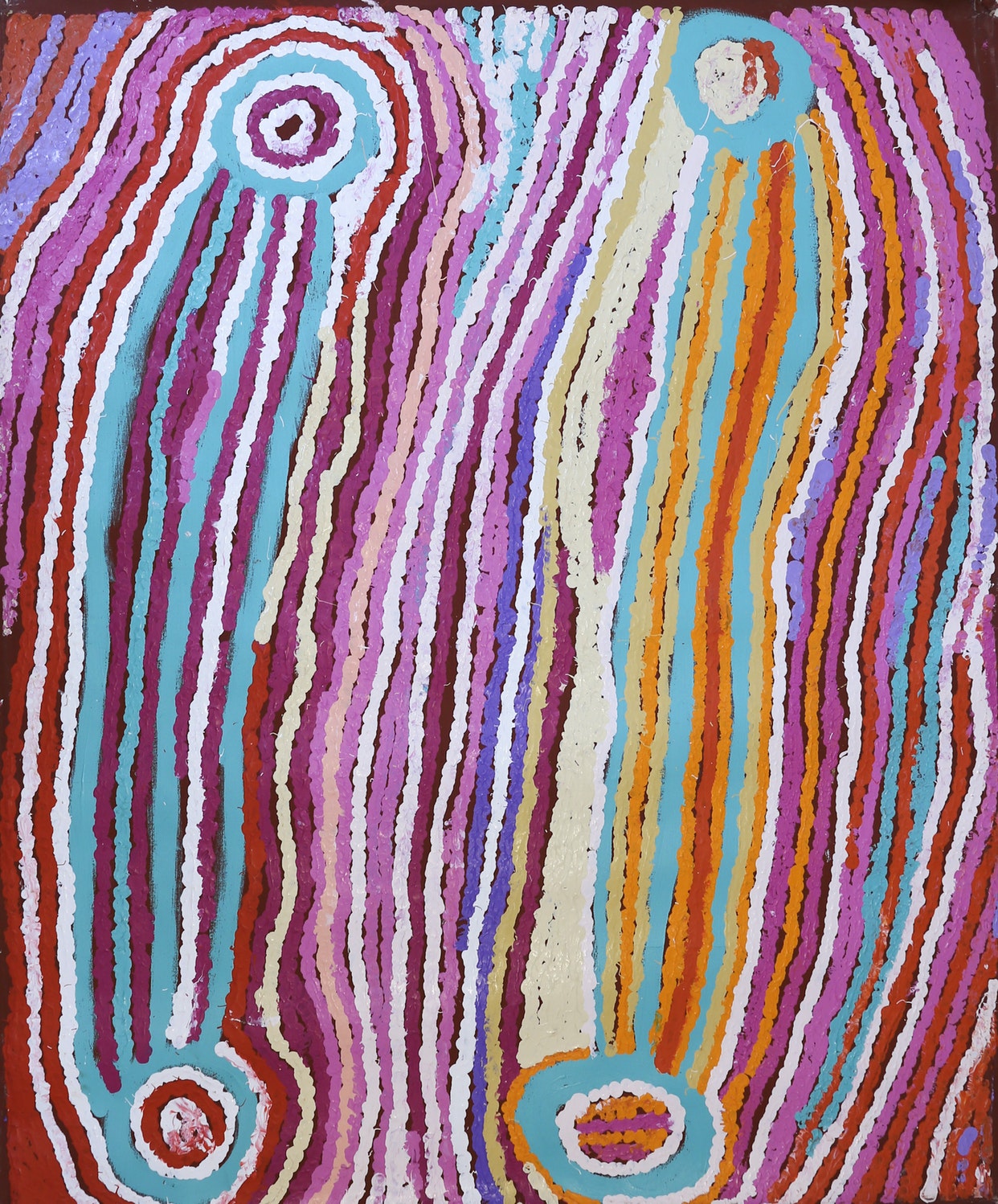
The popular dreamtime story of The Seven Sisters is usually shrouded in symbolic references. This depiction was produced by Indigenous artist Eileen Tjayanka Woods.
As discussed above, still life is often full of symbolism as artists curate arrangements to communicate more than the literal value of their subjects. The painting below is a perfect example. Melissa Ritchie captures a day in the life of a busy working woman by using a handbag, this piece’s metaphor for the day, with its contents strewn about and each object having its own analogy. For example, the list shows family commitments, the glasses represent vision, while the headphones show focus and the Ventolin depicts breath.

Arsenal for Today (Grey) by Melissa Ritchie
14. Tone
In painting, tone refers to the lightness or darkness of a colour. One colour has an almost infinite number of different tones! Tone can also mean the colour itself.
15.Verism
Last but not least, verism originates from latin to describe the adherence to strict naturalism in art. When depicting everyday subjects in art, in portraiture or still life, verism takes a “warts and all” approach, and is said to date back all the way to the Roman Republic era. Verism isn’t as widely used as other art terms on this list, but try sliding it into conversation to really impress your friends!
Ready to Use Your New Art Terms?
Whether you’re an art history enthusiast or just wanting to show off to your friends at your next trip to the local gallery, knowing the art terms commonly thrown about is a fun way to talk about all things art.




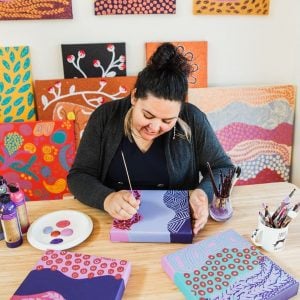







Loved this article. It was fabulous. Thanks again bluethumbteam. Regards Sandra Messner.
Yes, the 15 ‘Words’ are essential in the Arts circles. Your article defines each of them clearly without having to reach for a Thesaurus.
Two important terms that have been omitted are ‘All Prima’ and ‘En Plein Air’ both very current movements.
Thank you bluethumb. The article is so informative and well explained.
I loved this article. Thank you Bluethumb!
Thankyou Bluethumb for these informative articles. I’ve only just found your blogs & they fill a huge gap in knowledge for me. Just brilliant!
As an ‘accredited judge’ of Fine Arts and the only Australian to have been awarded a certificate of ‘Exhibition procedures and Artistic studies’ inclusive of ‘The Judging of Fine Arts as in Visual Arts’ at international level with the Royal Academy of Arts in London. I will remain the only Australian as the Academy no longer conducts these external studies. I was their guest in 1984 and 1985. I learnt Selection and Judging techniques from the Royal Academicians as my tutors., Each being a specialist in two or more ‘Categories’ of Fine Arts, Contemporary (meaning ‘of today with all accepted additives and alterations from its original crated concepts) and Traditional ( meaning as originally created). I was first taught to to judge, you must categorise the artwork, as in Abstract, Impressionism and judge the techniques and technical correctness in use of materials and equipment. like oil over Acrylic not Acrylic over oil and the destruction of the base sizing or bruising of watercolour papers. The list goes on and on, I have identified some 890 Categories on my list and being used in Australia by different artists. I am very aware that what I learnt is not taught in the Southern hemisphere and I believe the reason why Australians seldon win awards in the northern hemisphere Art Competition Circuit. I used the knowledge in competition in the prestigious ‘2002 Caterina de medici Art Award’ in Florence, Italy. Bringing home both the silver medal and people’s choice awards. Not sure why the Italian’s liked the Aussie’s artwork to their own entrants and the rest of the world entrants! But even the mayor liked it, buying it from the people who received it by Acquisition and adding it to the
City of Florence’s famous Art Collection. I love what you are doing. keep up the good work.
Kind Regards Gillian-Kaye Peebles (formerly Aitken,nee Easton)